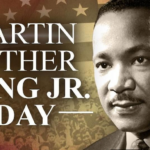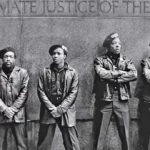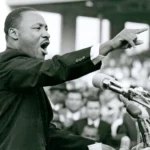Unveiling the Essence of Black Lives Matter
The Black Lives Matter (BLM) movement stands as a powerful force, echoing the voices of millions around the globe advocating for justice, equality, and the recognition of the intrinsic value of Black lives. This article delves into the intricate tapestry of BLM, exploring its origin, founders, underlying reasons, notable achievements, major events, timeline, contributions, and its profound relevance to the annals of black history.
I. Genesis of a Movement
A. Birth of Black Lives Matter
The roots of BLM can be traced back to 2013, following the acquittal of Trayvon Martin’s killer. Alicia Garza, Patrisse Cullors, and Opal Tometi, spurred by a deep sense of injustice, initiated the hashtag #BlackLivesMatter on social media. This digital rallying cry quickly evolved into a robust movement calling for an end to systemic racism and violence against Black individuals.
B. Founders: Alicia, Patrisse, and Opal
Alicia Garza, a community organizer; Patrisse Cullors, an artist and organizer; and Opal Tometi, an activist and writer, collectively founded BLM. Their commitment to dismantling oppressive systems and empowering marginalized communities became the cornerstone of the movement.
II. The Underlying Reasons
A. Systemic Racism and Police Brutality
BLM arose as a response to pervasive systemic racism and police brutality disproportionately affecting Black communities. Incidents such as the deaths of Michael Brown, Eric Garner, and Breonna Taylor fueled the movement, highlighting the urgent need for reform in law enforcement and societal structures.
B. Socioeconomic Disparities
Beyond police violence, BLM addresses broader issues of socioeconomic disparities, including disparities in education, healthcare, and economic opportunities. The movement advocates for comprehensive reforms to create an equitable society.
III. Triumphs and Achievements
A. Policy Reforms and Legislative Impact
BLM has achieved notable success in influencing policy changes. Initiatives like Campaign Zero, aiming to end police violence, and the passing of legislation such as the George Floyd Justice in Policing Act showcase the movement’s impact on shaping legal frameworks.
B. Corporate and Cultural Influence
The movement has transcended the realm of politics, permeating popular culture and corporate environments. Many companies have pledged to address racial inequalities, and BLM’s influence on public discourse has sparked essential conversations about race and privilege.
IV. Major Events in the BLM Journey
A. Ferguson Protests (2014)
The fatal shooting of Michael Brown in Ferguson, Missouri, became a catalyst for BLM. Protests erupted, drawing attention to police militarization and sparking a national conversation about racial injustice.
B. George Floyd Protests (2020)
The killing of George Floyd in Minneapolis triggered global protests, with millions demanding justice and systemic change. This event marked a turning point, reigniting the urgency for comprehensive reform in policing and racial justice.
V. Timeline of Black Lives Matter
A. 2013-2014: Emergence and Early Activism
The movement gains momentum following the acquittal of Trayvon Martin’s killer and gains traction during the Ferguson protests.
B. 2020: George Floyd’s Death and Global Uprising
George Floyd’s death thrusts BLM into the global spotlight, with widespread protests demanding justice and systemic change.
VI. Contributions to Black History
A. Redefining Narratives
BLM has played a pivotal role in reshaping narratives surrounding Black individuals, challenging stereotypes, and fostering a sense of pride within the Black community.
B. Mobilizing Global Solidarity
The movement’s ability to mobilize diverse communities worldwide has created a global network committed to eradicating racial injustice.
VII. Relevance to Black History
A. Bridging Historical Gaps
BLM serves as a bridge between historical struggles for civil rights and contemporary efforts to dismantle systemic racism, ensuring that the ongoing fight is deeply rooted in historical context.
B. A Catalyst for Change
The movement’s impact extends beyond immediate policy changes, acting as a catalyst for ongoing conversations, education, and sustained efforts to dismantle entrenched racism.
VIII. Top 20 Most Asked Questions on Black Lives Matter
- What is the origin of the Black Lives Matter movement?
- The BLM movement originated in 2013 as a response to the acquittal of Trayvon Martin’s killer, evolving from a hashtag into a global advocacy movement.
- Who are the founders of Black Lives Matter?
- The founders are Alicia Garza, Patrisse Cullors, and Opal Tometi, activists committed to dismantling systemic racism and empowering marginalized communities.
- What are the main goals of BLM?
- BLM seeks to end systemic racism, police brutality, and socioeconomic disparities while fostering justice, equality, and the recognition of Black lives.
- How has BLM influenced policy changes?
- BLM has influenced policy changes through initiatives like Campaign Zero and legislative victories such as the George Floyd Justice in Policing Act.
- What are the key events in the history of BLM?
- Key events include the Ferguson protests in 2014 and the global uprisings following George Floyd’s death in 2020.
- What is the significance of the Ferguson protests in BLM’s history?
- The Ferguson protests highlighted police militarization and became a catalyst for the BLM movement, drawing attention to racial injustice.
- How did George Floyd’s death impact the BLM movement?
- George Floyd’s death ignited global protests, marking a turning point and reigniting the urgency for comprehensive reform in policing and racial justice.
- What legislative changes has BLM advocated for and achieved?
- BLM has advocated for legislative changes, contributing to initiatives like Campaign Zero and the passing of the George Floyd Justice in Policing Act.
- What role does BLM play in addressing socioeconomic disparities?
- BLM addresses broader issues beyond police violence, advocating for comprehensive reforms to tackle socioeconomic disparities in education, healthcare, and economic opportunities.
- How has BLM influenced popular culture and corporate environments?
- BLM has transcended politics, influencing popular culture and corporate environments by sparking conversations about racial inequalities and privilege.
- What are the criticisms of the Black Lives Matter movement?
- Critics argue about aspects like lack of centralized leadership, concerns about violence during protests, and perceived ideological differences within the movement.
- How does BLM address issues beyond police violence?
- BLM tackles broader issues such as systemic racism, socioeconomic disparities, and unequal access to education, healthcare, and economic opportunities.
- What is the role of BLM in reshaping narratives about Black individuals?
- BLM plays a pivotal role in challenging stereotypes and reshaping narratives, fostering a sense of pride within the Black community.
- How has BLM fostered global solidarity?
- BLM’s ability to mobilize diverse communities globally has created a network committed to eradicating racial injustice and promoting global solidarity.
- What is the timeline of significant events in the BLM movement?
- The movement emerged in 2013, gained traction during the Ferguson protests in 2014, and reached global prominence in 2020 following George Floyd’s death.
- What is the relevance of BLM to black history?
- BLM serves as a bridge between historical struggles for civil rights and contemporary efforts, ensuring that the ongoing fight against racism is deeply rooted in historical context.
- How does BLM contribute to ongoing conversations about race?
- BLM contributes to ongoing conversations by fostering dialogue, education, and awareness about racial injustice and systemic racism.
- In what ways has BLM influenced education and awareness about racial injustice?
- BLM has influenced education by promoting awareness about racial injustice, systemic racism, and the historical context of the Black experience.
- How does BLM connect historical struggles for civil rights with contemporary efforts?
- BLM serves as a connection between historical struggles for civil rights, ensuring that contemporary efforts are informed by a deep understanding of historical context.
- What are the long-term goals of the Black Lives Matter movement?
- The long-term goals include dismantling systemic racism, achieving racial justice and equality, and fostering lasting societal change that recognizes the intrinsic value of Black lives.
Conclusion: A Continuing Saga of Advocacy
In conclusion, the Black Lives Matter movement is an indelible chapter in the ongoing saga of advocacy for racial justice and equality. From its grassroots origins to its global impact, BLM stands as a testament to the power of collective action and the imperative to address systemic racism. As the movement continues to evolve, it remains a force for positive change, reshaping narratives, influencing policies, and leaving an indelible mark on the canvas of black history.





